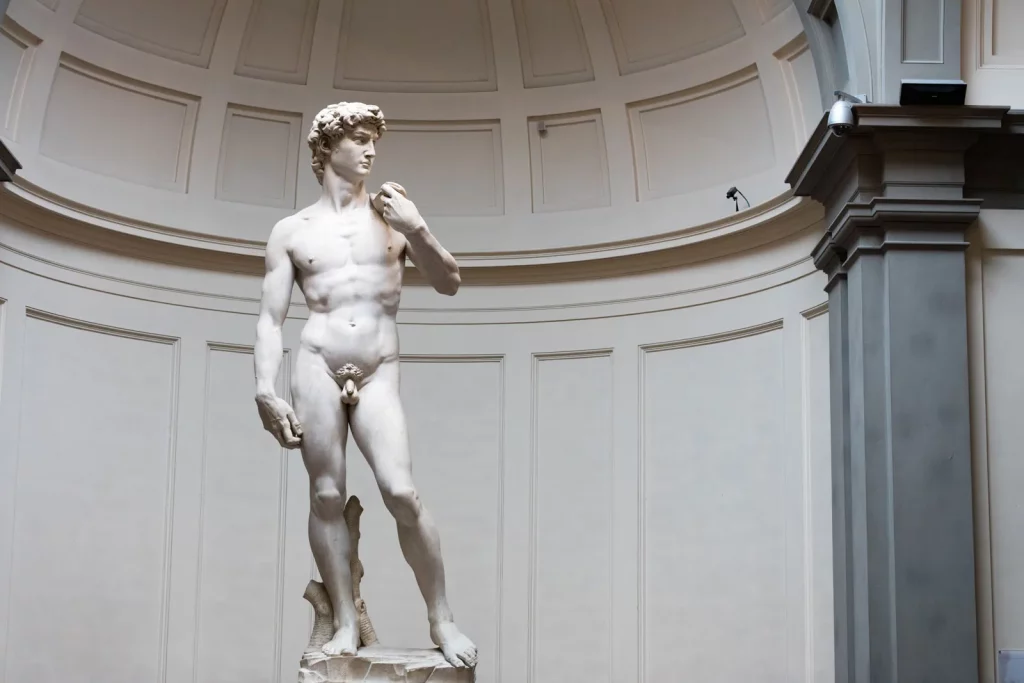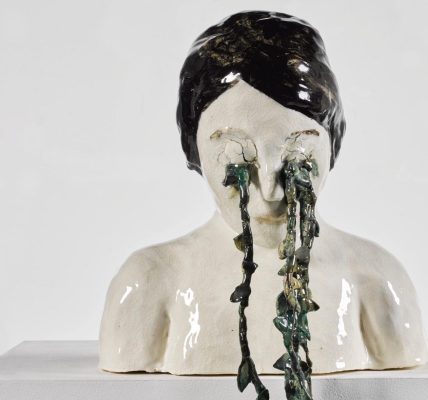Unveiling the Magnificence of Michelangelo’s David: A Masterpiece of Renaissance Sculpture
Among the pantheon of Renaissance masterpieces, Michelangelo’s David stands as a towering achievement of artistic excellence and human ingenuity. Carved from a single block of marble with meticulous precision and unparalleled skill, this iconic sculpture has captivated audiences for centuries with its beauty, power, and timeless significance. In this article, we’ll delve into the history, symbolism, and enduring legacy of Michelangelo’s David, exploring the intricate details and profound meaning behind one of the greatest sculptures in art history.
The Genesis of David:
Michelangelo’s David, a colossal marble statue standing over 17 feet tall, was commissioned by the city of Florence in 1501 as a symbol of the city-state’s republican ideals and defiance against external threats. The commission originally called for the sculpture to be placed atop the Florence Cathedral, but Michelangelo’s vision and ambition led him to create a larger-than-life representation of David, the biblical hero who symbolized the triumph of virtue over tyranny.
Michelangelo, then in his twenties, embarked on the monumental task of sculpting David from a massive block of Carrara marble that had been abandoned by previous artists. Working tirelessly for over two years, Michelangelo transformed the rough-hewn stone into a masterpiece of breathtaking beauty and anatomical precision, capturing the essence of youthful strength, courage, and resolve.
The Anatomy of David:
One of the most striking features of Michelangelo’s David is its anatomical accuracy and naturalistic portrayal of the human form. From the intricate musculature of David’s body to the delicate veins and tendons in his hands and feet, every detail of the sculpture reflects Michelangelo’s unparalleled understanding of human anatomy and his ability to breathe life into stone.
David’s muscular physique, with its idealized proportions and dynamic pose, exudes a sense of strength, vitality, and determination. The sculpture’s contrapposto stance, with David’s weight shifted onto one leg while the other leg remains relaxed, creates a sense of movement and grace that is both lifelike and dramatic.
Michelangelo’s attention to detail is evident in every aspect of David’s anatomy, from the subtle curvature of his spine to the veins pulsing beneath his skin. The sculptor’s mastery of chiaroscuro, the contrast between light and shadow, further accentuates the sculptural relief and imbues David’s form with a sense of three-dimensionality and depth.
Symbolism and Interpretation:
Beyond its artistic beauty and technical virtuosity, Michelangelo’s David is imbued with layers of symbolism and allegory that resonate with viewers on both a personal and cultural level. As a representation of the biblical hero David, the sculpture embodies virtues such as courage, resilience, and moral righteousness, qualities that were highly prized in Renaissance Florence.
David’s triumph over the formidable Goliath symbolizes the triumph of virtue and righteousness over tyranny and oppression, serving as a powerful allegory for the struggle of the Florentine Republic against external threats and internal strife. The sculpture’s placement in the Piazza della Signoria, the political heart of Florence, further reinforces its symbolic significance as a rallying cry for freedom and independence.
In addition to its political symbolism, Michelangelo’s David also carries religious connotations, evoking parallels with the biblical narrative of David and Goliath. The figure of David, with his youth and innocence, represents the triumph of divine providence and moral courage over worldly power and might, reminding viewers of the importance of faith, righteousness, and divine intervention in the face of adversity.
Legacy and Influence:
Since its unveiling in 1504, Michelangelo’s David has exerted a profound influence on artists, scholars, and viewers around the world, inspiring countless interpretations, adaptations, and tributes across various artistic mediums. From paintings and sculptures to literature and film, the legacy of David continues to resonate with audiences of all ages and backgrounds.
The sculpture’s impact extends far beyond the realm of art, serving as a symbol of Italian identity, cultural heritage, and human achievement. Michelangelo’s David has become an enduring icon of the Renaissance, embodying the ideals of humanism, individualism, and artistic excellence that defined the era.
Michelangelo’s David stands as a testament to the boundless creativity and genius of one of history’s greatest artists. From its monumental scale and exquisite craftsmanship to its profound symbolism and enduring legacy, the sculpture continues to inspire awe and admiration, inviting viewers to contemplate the beauty of the human form, the power of the human spirit, and the enduring quest for truth and justice. As we marvel at the magnificence of Michelangelo’s David, we are reminded of the enduring power of art to transcend time, space, and culture, and connect us to the universal truths that unite us all.


